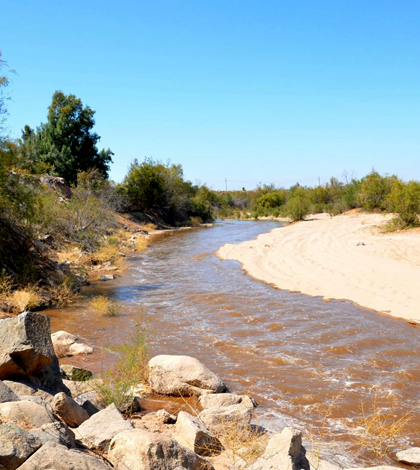Tradeoffs To Colorado River Wetland Restoration

Colorado River. (Credit: University of Florida)
A large pulse of water released down the Colorado River in early 2014 was mostly seen as a good thing for the river and the lifeforms living along its bed. Indeed, the surge of water — 130 million cubic meters in volume — helped restore sand bars and fed parched wetland areas reaching all the way to Mexico. But, according to scientists at the University of Florida, the effects of this Colorado River wetland restoration may have had some unintended impacts.
While many researchers gauged the benefits that the water, released from the Morelos Dam on the U.S.-Mexico border, had on shoreline communities and birds, the U. of Florida investigators looked at the water itself. Specifically, they wanted to know how the chemistries of the floodwaters changed over time.
To gauge that, scientists focused on concentrations of methane and carbon dioxide in the riverbed and sampled over a period of eight weeks to determine how much of those greenhouse gases released into the water. The thinking beyond that was that the gases would then dissipate into the atmosphere above.
Investigators found that re-wetting the dried riverbed contributed to a release of dissolved carbon, methane and carbon dioxide to the floodwaters. They largely attributed the increases to gases releasing from the dry riverbed.
In addition, the age of dissolved carbon coming off the riverbed was also established using carbon dating, which indicated that some of the carbon was likely stored below-ground for thousands of years. The infiltrating floodwaters finally led to its release at the surface.
But that may only be a short-term consequence. By supplying new moisture to the Colorado River delta, the pulse of water may also help to support the growth of native plants that can absorb and store carbon dioxide better than invasive ones. Enough native plant growth may be able to offset the carbon dioxide and methane released after flooding.
Top image: Colorado River. (Credit: University of Florida)




0 comments